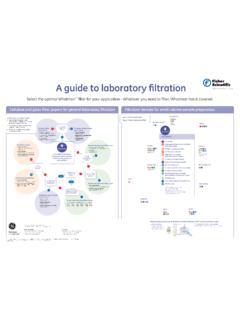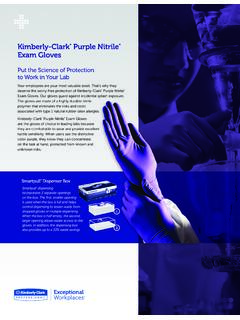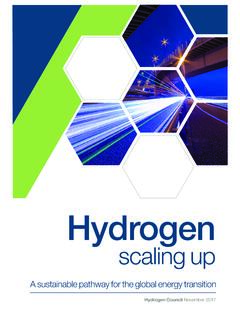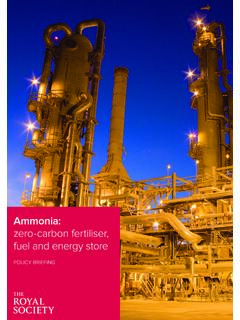Transcription of Safety Data Sheet - Fisher Sci
1 Safety Data Sheetaccording to 29 CFR1910/1200 and GHS Rev. 3 Effective date : 1 of 8 methanol , Lab Grade, 4 LCreated by global Safety Management, Inc. -Tel: 1-813-435-5161 - 1 : Identification of the substance/mixture and of the supplierProduct name : methanol , Lab Grade, 4 LManufacturer/Supplier Trade name:Manufacturer/Supplier Article number:S25426 ARecommended uses of the product and uses restrictions on use:Manufacturer Details:AquaPhoenix Scientific9 Barnhart Drive, Hanover, PA 17331 Supplier Details: Fisher Science Education15 Jet View Drive, Rochester, NY 14624 Emergency telephone number: Fisher Science Education Emergency Telephone No.: 800-535-5053 SECTION 2 : Hazards identificationClassification of the substance or mixture:FlammableFlammable liquids, category 2 ToxicAcute toxicity (oral, dermal, inhalation), category 3 Health hazardSpecific target organ toxicity following single exposure, category 1 AcTox Dermal.
2 3 Flammable liq. 2 AcTox Oral. 3 AcTox Inhaln. 3 Stot SE. 1 Signal word :DangerHazard statements:Highly flammable liquid and vapourToxic if swallowedToxic in contact with skinToxic if inhaledCauses damage to organsPrecautionary statements:If medical advice is needed, have product container or label at handKeep out of reach of childrenRead label before useSafety Data Sheetaccording to 29 CFR1910/1200 and GHS Rev. 3 Effective date : 2 of 8 methanol , Lab Grade, 4 LCreated by global Safety Management, Inc. -Tel: 1-813-435-5161 - protective gloves/protective clothing/eye protection/face protectionWash skin thoroughly after handlingDo not eat, drink or smoke when using this productAvoid breathing dust/fume/gas/mist/vapours/sprayKeep away from heat/sparks/open flames/hot surfaces.
3 No smokingDo not breathe dust/fume/gas/mist/vapours/spraySpecific treatment (see supplemental first aid instructions on this label)IF ON SKIN: Wash with soap and waterCall a POISON CENTER or doctor/physician if you feel unwellSpecific measures (see supplemental first aid instructions on this label)Take off contaminated clothing and wash before reuseWash contaminated clothing before reuseIF SWALLOWED: Immediately call a POISON CENTER or doctor/physicianIF exposed: Call a POISON CENTER or doctor/physicianIF INHALED: Remove victim to fresh air and keep at rest in a position comfortable for breathingStore locked upStore in a well ventilated place. Keep coolDispose of contents and container as instructed in Section 13 Other Non-GHS Classification:WHMISB2D1BD2 BNFPA/HMISNFPA SCALE (0-4)HMIS RATINGS (0-4)SECTION 3 : Composition/information on ingredientsIngredients:CAS 67-56-1 methanol >90 % Safety Data Sheetaccording to 29 CFR1910/1200 and GHS Rev.
4 3 Effective date : 3 of 8 methanol , Lab Grade, 4 LCreated by global Safety Management, Inc. -Tel: 1-813-435-5161 - are by weightSECTION 4 : First aid measuresDescription of first aid measuresAfter inhalation: Move exposed individual to fresh air. Loosen clothing as necessary and position individual ina comfortable medical breathing is difficult, give oxygenAfter skin contact: Wash affected area with soap and water. Rinse/flush exposed skin gently using water for15-20 minutes. Seek medical attention if irritation persists or if eye contact: Protect unexposed eye. Rinse or flush eye gently with water for at least 15-20 minutes,lifting upper and lower medical attention if irritation persists or if concernedAfter swallowing: Rinse mouth thoroughly.
5 Do not induce vomiting. Have exposed individual drink sips ofwater. Dilute mouth with water or milk after medical important symptoms and effects, both acute and delayed:Poison. Toxic by ingestion, absorption through skin and inhalation, potentially causing irreversible to eyes, skin, and respiratory tract. Irritation- all routes of be fatal or cause blindness if swallowed. Cannot be made non-poisonous. Maycause gastrointestinal irritation, vomiting, and diarrhea. Central nervous system disorders. Skin disorders,preexisting eye disorders, gastrointestinal tract;Toxic: danger of very serious irreversible effects by inhalation,ingestion or absorption through skin. Experiments have shown reproductive toxicity effects on laboratoryanimals.
6 May cause adverse kidney and liver effectsIndication of any immediate medical attention and special treatment needed:If seeking medical attention, provide SDS document to should treat 5 : Firefighting measuresExtinguishing mediaSuitable extinguishing agents: Dry chemical, foam, dry sand, or Carbon spray can keepcontainers Safety reasons unsuitable extinguishing agents: Water may be hazards arising from the substance or mixture:Risk of ignition. Vapors may form explosive mixtures with air. Vapors may travel to source of ignition and flashback. Containers may explode when heatedAdvice for firefighters:Protective equipment: Wear protective eyeware, gloves, and clothing. Refer to Section information (precautions): Remove all sources of ignition.
7 Avoid contact with skin, eyes, adequate precautions against static 6 : Accidental release measuresPersonal precautions, protective equipment and emergency procedures:Use spark-proof tools and explosion-proof exhaust ventilation or other engineering controlsto keep the airborne concentrations of vapor and mists below the applicable workplace exposure limits(Occupational Exposure Limits-OELs) indicated adequate precautions:Prevent from reaching drains, sewer or waterway. Should not be released into and material for containment and cleaning up:If necessary use trained response staff or contractor. Remove all sources of ignition. Contain spillage and thenSafety Data Sheetaccording to 29 CFR1910/1200 and GHS Rev.
8 3 Effective date : 4 of 8 methanol , Lab Grade, 4 LCreated by global Safety Management, Inc. -Tel: 1-813-435-5161 - Do not flush to with a noncombustible absorbent material such as sand or earth andcontainerize for disposal. Ventilate area of leak or spark-proof tools and proper disposal methods. Refer to Section to other sections:SECTION 7 : Handling and storagePrecautions for safe handling:Use in a chemical fume hood. Wash hands before breaks and immediately after handling the with skin, eyes, and precautions against static for safe storage, including any incompatibilities:Store in a cool location. Provide ventilation for containers. Avoid storage near extreme heat, ignition sources oropen flame. Keep container tightly with like hazards.
9 Protect from freezing and physical 8 : Exposure controls/personal protectionControl Parameters:67-56-1, methanol , ACGIH: 250 ppm STEL; 200 ppm TWA67-56-1, methanol , NIOSH: 250 ppm STEL; 325 mg/m3 STEL67-56-1, methanol , NIOSH: 200 ppm TWA; 260 mg/m3 TWAA ppropriate Engineering controls:Emergency eye wash fountains and Safety showers should be available inthe immediate vicinity of use or handling. Ensure that dust-handlingsystems (exhaust ducts, dust collectors, vessels, and processingequipment) are designed to prevent the escape of dust into the protection:Use in a chemical fume hood. If exposure limit is exceeded, a full-facerespirator with organic cartridge may be of skin:Select glove material impermeable and resistant to the material based on rates of diffusion and protection: Safety glasses with side shields or hygienic measures:Wash hands before breaks and at the end of work.
10 Avoid contact with theeyes and of contaminated gloves after use in accordancewith applicable laws and good laboratory 9 : Physical and chemical propertiesAppearance (physicalstate,color):Clear colorless liquidExplosion limit lower:Explosion limit upper:631 Odor:AlcoholVapor pressure:128 hPa @ 20 COdor threshold:Not AvailableVapor :Not AvailableRelative point:-98 CSolubilities:Miscible at 20 CSafety Data Sheetaccording to 29 CFR1910/1200 and GHS Rev. 3 Effective date : 5 of 8 methanol , Lab Grade, 4 LCreated by global Safety Management, Inc. -Tel: 1-813-435-5161 - point/ C @ 760mmHgPartition coefficient (n-octanol/water):Not AvailableFlash point (closedcup):12 CAuto/Self-ignitiontemperature:455 CEvaporation :Not AvailableFlammability(solid,gaseous):Fla mmableViscosity:a.



















